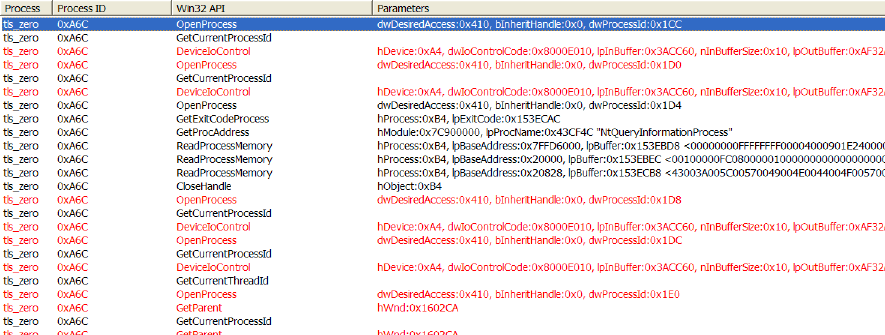

| Current | v9 | v8 | v7 | v6 | v5 | v4 | v3 | v2 | v1 | All | About |
Blacklight
This paper will focus primarily on Blacklight due to its algorithm being the research focus for this paper. Also, it became apparent after researching Blacklight that IceSword used a very similiar algorithm. Therefore, if a weakness was found in Blacklight, it would most likely exist in IceSword as well.
Blacklight takes a userland approach to detecting processes. Although simplistic, its algorithm is amazingly effective. Blacklight uses some very strong anti-debugging features that begin by creating a Thread Local Storage (TLS) callback table. Blacklight’s TLS callback attempts to befuddle debuggers by forking the main process before the process object is fully created. This can occur because the TLS callback routine is called before the process is completely initialized. Blacklight also has anti-debugging measures that detect the presence of debuggers attaching to it. Rather than attempting to beat the anti-debugging measures by circumventing the TLS callback and making other program modifications, the authors decided to just disable the TLS routine. To do this, the authors used a tool called LordPE[4]. LordPE allows users to edit PE files. The authors used this tool to zero out the TLS callback table. This disabled the forking routine and gave the authors the ability to use an API Monitor. It should be noted that disabling the callback routine would allow you to attach a debugger, but when the user clicked "scan" in the Blacklight GUI Blacklight would detect the debugger and exit. Instead of working up a second measure to circumvent the anti-debugging routines, the authors decided to analyze the calls occuring within Blacklight. To this end, the authors used Rohitabs API Monitor[6]. Figure ![[*]](images/html/crossref.png) shows the API calls made when Blacklight is searching for hidden processes.
shows the API calls made when Blacklight is searching for hidden processes.
In figure ![[*]](images/html/crossref.png) , notice the failed calls to the API OpenProcess (tls zero is Blacklight without a TLS table). Blacklight tries opening a process with process id (PID) of 0x1CC, 0x1D0, 0x1D4, 0x1D8 and so on. The authors dubbed the method Blacklight uses as PID Bruteforce (PIDB). Blacklight loops through all possible PIDS calling OpenProcess on the PIDs in the range of 0x0 to 0x4E1C. Blacklight keeps a list of all processes it is able to open, using the PIDB method. Blacklight then calls CreateToolhelp32Snapshot, which gives Blacklight a second list of processes. Blacklight then compares the two lists, to see if there are any processes in the PIDB list that are not in the list returned by the CreateToolhelp32Snapshot function. If there is any discrepancy, these processes are considered hidden and reported to the user.
, notice the failed calls to the API OpenProcess (tls zero is Blacklight without a TLS table). Blacklight tries opening a process with process id (PID) of 0x1CC, 0x1D0, 0x1D4, 0x1D8 and so on. The authors dubbed the method Blacklight uses as PID Bruteforce (PIDB). Blacklight loops through all possible PIDS calling OpenProcess on the PIDs in the range of 0x0 to 0x4E1C. Blacklight keeps a list of all processes it is able to open, using the PIDB method. Blacklight then calls CreateToolhelp32Snapshot, which gives Blacklight a second list of processes. Blacklight then compares the two lists, to see if there are any processes in the PIDB list that are not in the list returned by the CreateToolhelp32Snapshot function. If there is any discrepancy, these processes are considered hidden and reported to the user.
Subsections
